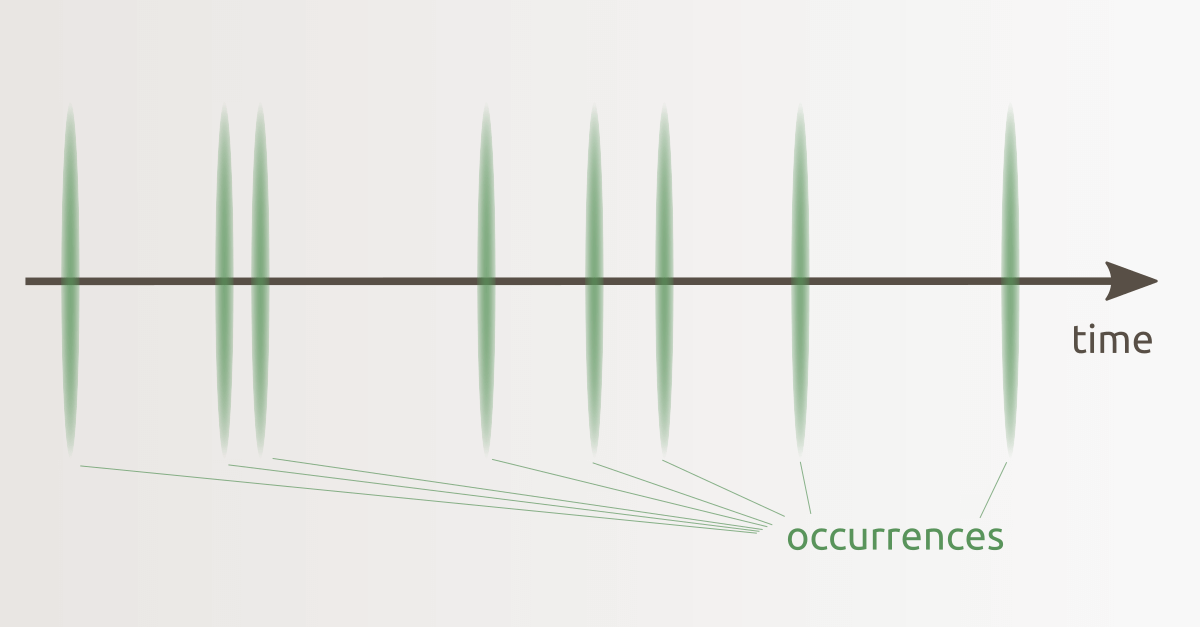
For probabilistic modeling of engineering systems, the Poisson process is a very important stochastic process – if not the most important one. It can be used to model the occurrence of independent random events along a continuous axis. For example, the Poisson process can be used to model occurrences of earthquakes or accidents in time, as well as the occurrence of defects along a pipeline or breakdowns per driven distance.
In order to model occurrences with a Poisson process, the underlying process must have the following properties:
- Independent occurrences: The number of occurrences in two non-overlapping intervals must be statistically independent.
- Probability of occurrences proportional to duration: In an interval $[t,t+\Delta t]$, the probability of exactly one occurrence is asymptotically proportional to the interval length $\Delta t$, as $\Delta t \to 0$.
- Occurrences do not coincide: The probability of two or more occurrences within a sufficiently small interval must be orders of magnitude lower than the probability of one occurrence.
A Poisson process can be quantified through its rate of occurrence $\lambda$. If the rate is constant, the process is called a homogeneous Poisson process. If the rate varies with time or space, the process is referred to as a non-homogeneous Poisson process. If not explicitly mentioned otherwise, we restrict the discussion to the homogeneous case.
The following random variables are often used in combination with an underlying Poisson process:
- The number of occurrences in the interval $[0,t]$ follows a Poisson distribution with mean $\nu=\lambda t$.
- The time/distance to the first event and
- the time/distance between successive events follow an exponential distribution with rate $\lambda$.
- The time/distance to the $k$th occurrence follows a Gamma distribution with shape parameter $k$ and rate parameter $\lambda$, such that the mean is $k/\lambda$.
+49 (0)89 21709083
